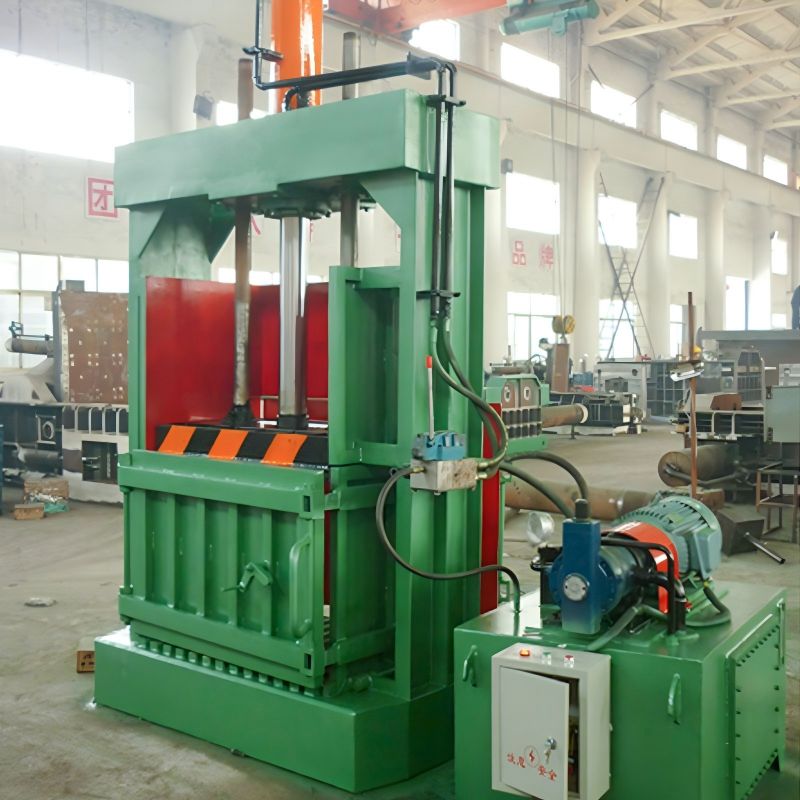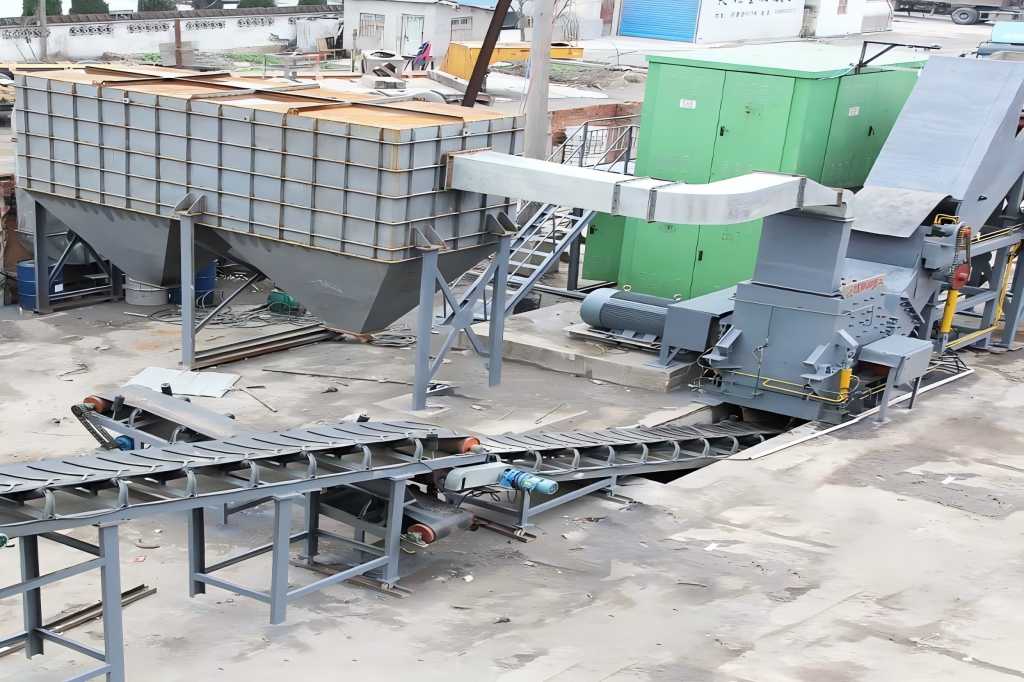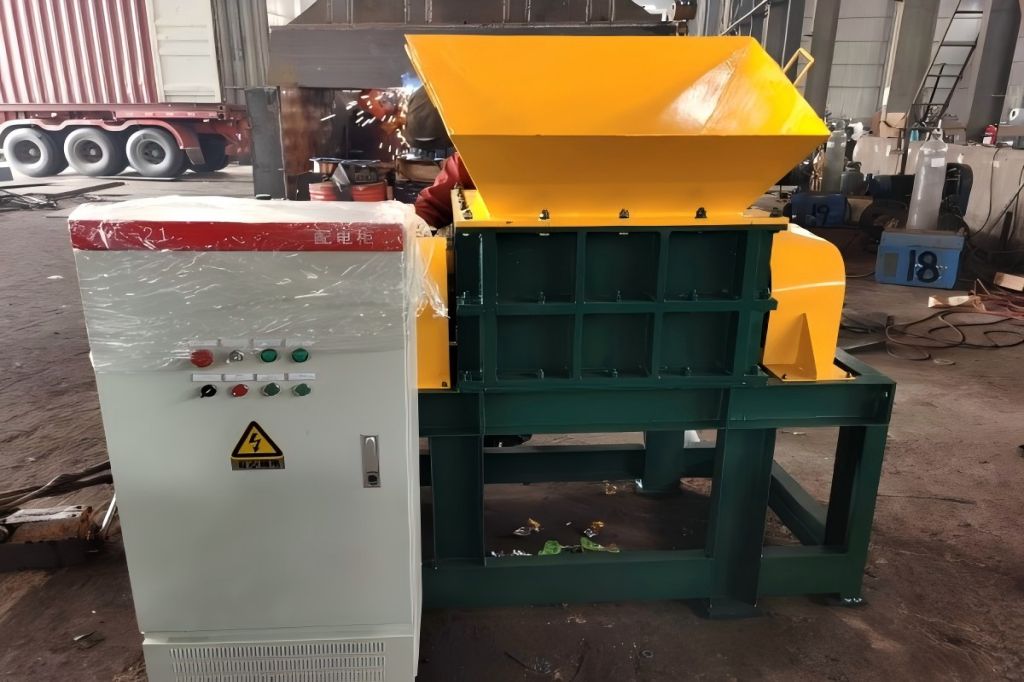Managing garbage effectively is essential to long-term company operations. Vertical and horizontal balers are essential tools for compressing materials like cardboard, plastic, and metal, streamlining recycling and transportation.
This article highlights their key features, pros, and cons, offering a detailed comparison to help you choose the right option.
What Are Vertical Balers?

Vertical balers use a vertical compression mechanism where waste material is loaded into the machine from the front, compressed downward, and then tied manually into compact bales. Their minimalistic design and small footprint make them an excellent fit for small to medium-sized operations.
Key Features:
- Compact Design: Businesses with limited floor space might benefit from the space-efficient vertical balers.
- Manual Operation: Typically semi-automatic, requiring operator involvement for loading and unloading.
- Material Focus: Best suited for lightweight recyclables like cardboard and plastic.
Advantages of Vertical Balers:
- Cost-Effective: They are less expensive than horizontal balers, making them a popular choice for smaller businesses.
- Space-Saving: Perfect for settings with little floor area.
- Ease of Use: User-friendly design makes them accessible even to non-specialist operators.
- Low Maintenance: Fewer moving parts simplify upkeep.
Limitations of Vertical Balers:
- Low Throughput: Unsuitable for high-volume waste processing.
- Labor Intensive: Requires manual tying and loading, increasing operational effort.
- Material Limitations: Cannot handle dense or bulky materials effectively.
What Are Horizontal Balers?

Horizontal balers compress materials in a horizontal direction. They can efficiently treat larger amounts of waste materials and are built for heavy-duty uses. A range of automation levels is offered by their semi-automatic and fully automatic variants.
Key Features:
- High Throughput: Capable of processing large volumes of waste rapidly.
- Automation Options: Ranges from semi-automatic to fully automatic models, reducing labor requirements.
- Material Compatibility: Handles diverse materials, including heavier recyclables like metal.
Advantages of Horizontal Balers:
- Efficiency: Processes larger volumes faster, saving time and labor.
- Versatility: Handles a variety of materials, including cardboard, metal, and dense plastics.
- Automation: Fully automatic models significantly reduce manual labor.
- Long-Term Value: Long-term savings are provided by automation and efficiency, even though the original investment is higher.
Limitations of Horizontal Balers:
- Higher Cost: The upfront investment is significantly higher than vertical balers.
- Space Requirements: Less appropriate for small institutions due to its higher floor space requirements.
- Maintenance Complexity: More components mean higher maintenance demands.
A Comparative Analysis of Horizontal and Vertical Balers
| Feature | Vertical Balers | Horizontal Balers |
| Size | Compact | Large |
| Processing Capacity | Low to medium volumes | High volumes |
| Automation | Semi-manual | Semi-automatic or fully automatic |
| Material Compatibility | Lightweight materials (e.g., cardboard) | Heavy and diverse materials |
| Labor Requirements | High | Low (with automation) |
| Floor Space Needed | Minimal | Significant |
| Cost | Lower upfront cost | Higher upfront cost |
| Maintenance | Simple | More complex |
| Ideal Applications | Retail, small warehouses, offices | Recycling plants, factories, warehouses |
Factors to Consider When Choosing a Baler
Selecting the right baler depends on several critical factors unique to your operation. Here’s a breakdown:
Waste Volume:
- Low to Medium Volume: Vertical balers are ideal for businesses generating small quantities of recyclable waste.
- High Volume: Horizontal balers are better suited for operations requiring continuous, high-capacity processing.
Type of Material:
- Lightweight Waste: Vertical balers work well for materials like cardboard and soft plastics.
- Heavy/Dense Waste: Horizontal balers are necessary for metal, rigid plastics, and mixed recyclables.
Space Availability:
- Vertical balers are compact and fit into smaller spaces.
- Horizontal balers require more room for installation and operation.
Budget Constraints:
- Vertical balers are more affordable upfront, making them an ideal choice for buyers with budget constraints.
- Horizontal balers involve higher initial costs but provide enhanced efficiency and long-term labor savings.
Labor Costs:
- Vertical balers need more operator input, increasing labor costs.
- Horizontal balers, especially fully automated ones, reduce manual intervention.
Long-Term Goals:
Businesses looking for scalability and efficiency might find horizontal balers more beneficial in the long run.
Applications of Vertical and Horizontal Balers
Vertical Balers in Action
- Retail Stores: Compact balers manage cardboard and plastic waste efficiently in limited backroom spaces.
- Small Warehouses: Ideal for low waste volumes, minimizing clutter, and improving organization.
- Offices: Helps compress paper waste, contributing to a cleaner and greener workspace.
Horizontal Balers in Action
- Recycling Facilities: High-capacity horizontal balers process diverse materials quickly, improving throughput.
- Manufacturing Plants: Perfect for handling bulky and dense materials like metal scraps and rigid plastics.
- Logistics Centers: Streamlines waste management for large packaging and shipping operations.
Technological Advancements in Balers
In order to increase sustainability, safety, and efficiency, the baler sector is using contemporary advancements. Some notable advancements include:
- Automation Enhancements: Fully automatic balers with conveyor feeding systems and programmable controls reduce manual effort.
- Smart Features: AI-powered systems can detect and sort materials, optimizing baling operations.
- Energy Efficiency: Eco-friendly balers with energy-saving modes reduce operational costs and environmental impact.
- Mobile Balers: Portable horizontal balers enable on-site waste management for construction sites and temporary setups.
Actual Case Studies
Case Study 1: A Small Retailer
A small retail store generates about 500 pounds of cardboard waste weekly. Due to limited storage space, they installed a vertical baler. The machine helped reduce waste volume by 80%, saving on disposal costs and improving backroom efficiency.
Case Study 2: A Large Recycling Facility
A recycling plant processes several tons of mixed materials daily. They invested in a fully automatic horizontal baler with AI integration, reducing manual labor by 50% and increasing material throughput by 30%.
Which Baler Is Best for You?
The choice between a vertical and horizontal baler ultimately comes down to your individual requirements. Businesses with small waste volumes and limited budgets will benefit from vertical balers. On the other hand, large-scale operations requiring efficiency, automation, and versatility will find horizontal balers more suitable.




